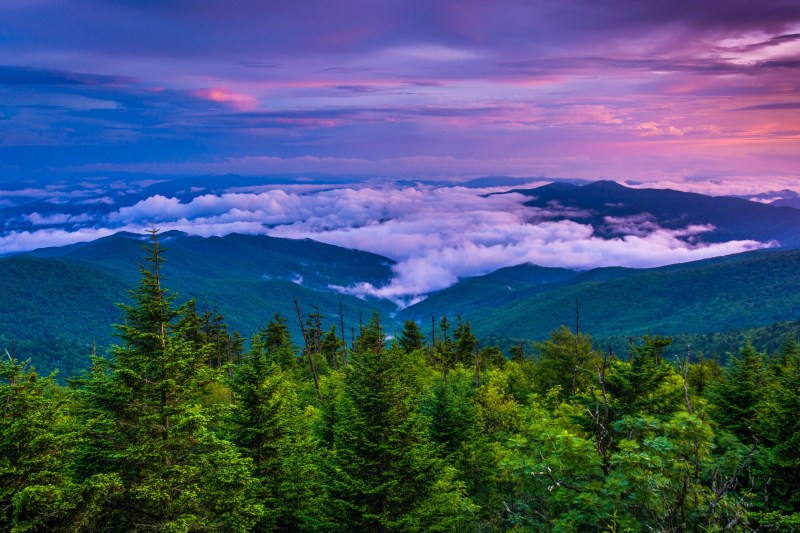
Tucked away in Tennessee, the Great Smoky Mountains National Park serves as the backdrop for a mesmerizing natural spectacle: the synchronous firefly display. Every summer, this event draws crowds from all over the world, and it’s definitely worth the trek. This year, the event will take place from Monday, June 3 to Monday, June 10 at Elkmont. However, you won’t be able to simply walk in this time. Like many national parks, the Great Smoky Mountains National Park has implemented a lottery-based reservation system to help manage the crowds. This is an opportunity that you won’t want to miss, so here’s everything you need to know about securing your reservation and why you should go in the first place.
The synchronous fireflies (Photinus carolinus) at Elkmont are one of at least 19 species of fireflies in the park, but what sets them apart is their unique behavior of flashing lights in unison. This phenomenon occurs for a period of about two weeks each year, during which males fly and flash together to attract mates, creating waves of light that ripple through the forest darkness. It’s breathtaking.
Reserve your place to see the synchronous firefly display

The National Park Service has structured the viewing as a limited and carefully managed event. Access to the Elkmont viewing area during the peak activity period of the fireflies is restricted to those who secure a vehicle reservation through a lottery system. This system is open for entries from April 26 to April 29 on the official portal at www.recreation.gov. A total of 1120 reservations will be granted, allowing 140 vehicles per night to participate in this exclusive experience.
While a bit controversial, the use of a lottery ensures a fair chance for all applicants. By limiting the number of viewers and controlling access to the Elkmont area, the park also prioritizes the preservation of the fireflies’ natural habitat. Successful applicants will be notified by May 6 and are required to pay a $24 reservation fee, which covers the costs of managing the event and providing necessary facilities like portable restrooms and on-site personnel.
Visitors to the firefly viewing event are required to follow specific guidelines to minimize their impact on the environment and the fireflies. This includes using only red or blue flashlights as white light can disrupt the fireflies’ patterns, keeping noise to a minimum, and staying on designated paths and viewing areas.
If you’re planning to attend the synchronous firefly viewing, it’s crucial to prepare and respect the natural habitat. Make sure to book accommodations well in advance since the event coincides with peak tourist season in the Smokies. Whether you’re a nature enthusiast, a wildlife photographer, or simply looking for a unique experience, the synchronous firefly display at Elkmont is an unforgettable spectacle. Don’t miss it!



